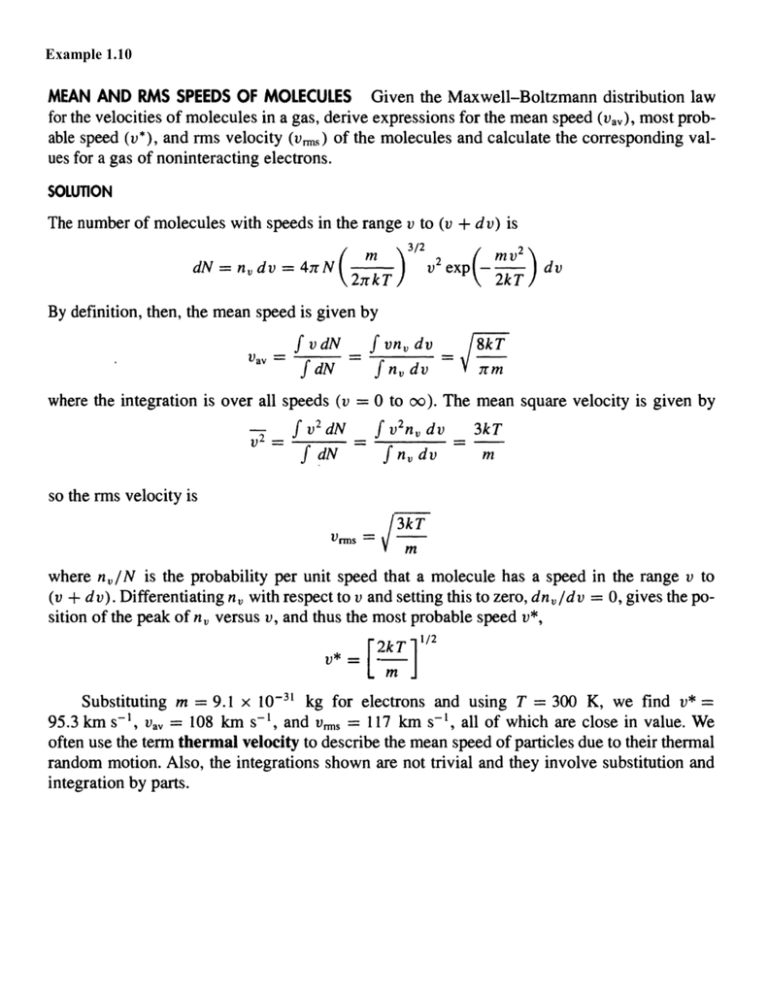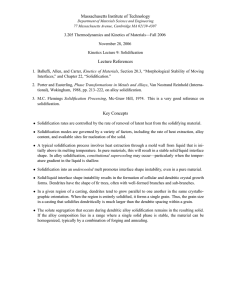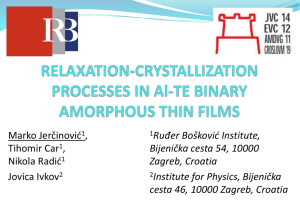Materials of Tutorial 2
advertisement

Example 1.10 ------------------------------------------------------------------------------------------------------------------2.5 TCR and Matthiessen’s rule Determine the temperature coefficient of resistivity of pure iron and of electrotechnical steel (Fe with 4% C), which are used in various electrical machinery, at two temperatures: 0 °C and 500 °C. Comment on the similarities and differences in the resistivity versus temperature behavior shown in Figure 2.39 for the two materials. Solution (We will take 0 ºC case as an example) Figure 2Q5-1: Resistivity versus temperature for pure iron and 4% C steel. The temperature coefficient of resistivity αo (TCR) is defined as follows: αo = Slope at To 1 dρ = ρ o dT To ρo where the slope is dρ/dT at T = To and ρo is the resistivity at T = To. To find the slope, we draw a tangent to the curve at T = To (To = 0 °C and then To = 500 °C) and obtain ∆ρ/∆T ≈ dρ/dT. One convenient way is to define ∆T = 400 °C and find ∆ρ on the tangent line and then calculate ∆ρ/∆T. Iron at 0 ºC: Slopeo ≈ (0.23 × 10-6 Ω m − 0 Ω m) / (400 °C) = ? Ω m °C -1 Since ρo ≈ 0.11 × 10-6 Ω m, αo = Slopeo/ρo ≈ ? °C -1 Fe + 4% C at 0 ºC: Slopeo ≈ (0.57 × 10-6 Ω m − 0.4 × 10-6 Ω m) / (400 °C) = @#$ Ω m °C -1 Since ρo ≈ 0.53 × 10-6 Ω m, αo = Slopeo/ρo ≈ )(*& °C -1 *2.6 TCR of isomorphous alloys a. Show that for an isomorphous alloy A%-B% (B% solute in A% solvent), the temperature coefficient of resistivity αAB is given by α AB ≈ α Aρ A ρ AB where ρAB is the resistivity of the alloy (AB) and ρA and αA are the resistivity and TCR of pure A. What are the assumptions behind this equation? Solution a. By the Nordheim rule, the resistivity of the alloy is ρalloy = ρο + CX(1 − X). We can find the TCR of the alloy from its definition α alloy = 1 dρ alloy ρ alloy dT = 1 ρ alloy d [ρ o + CX (1 − X )] dT To obtain the desired equation, we must assume that C is temperature independent (i.e. the increase in the resistivity depends on the lattice distortion induced by the impurity) so that d[CX(1 − X)]/dT = 0, enabling us to substitute for dρo/dT using the definition of the TCR: αo =(dρo/dT)/ρo. Substituting into the above equation: α alloy = i.e. 1 dρ o 1 = α o ρo ρ alloy dT ρ alloy α alloy ρ alloy = α o ρ o or α AB ρ AB = α A ρ A Remember that all values for the alloy and pure substance must all be taken at the same temperature, or the equation is invalid.




